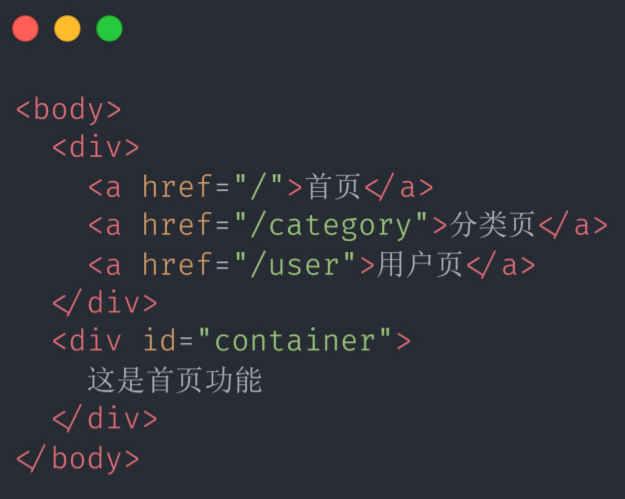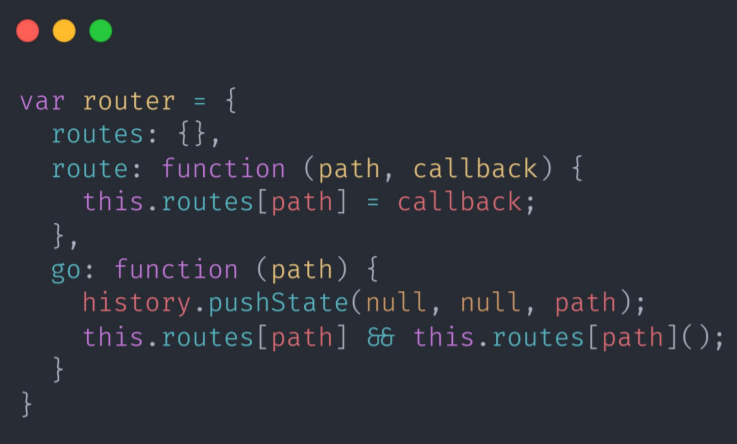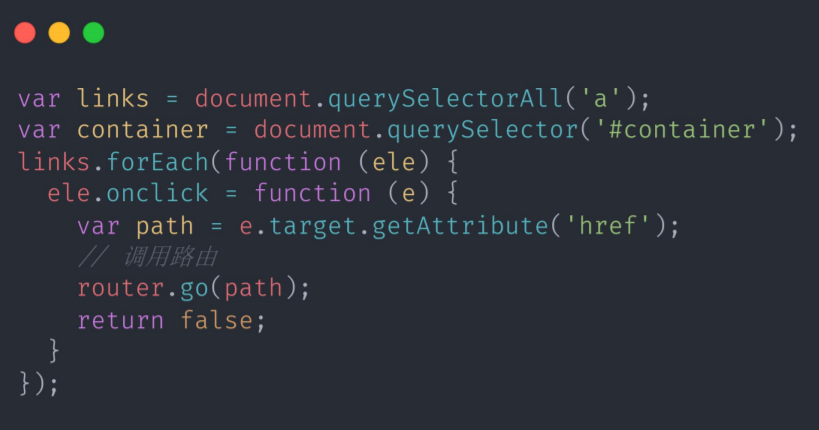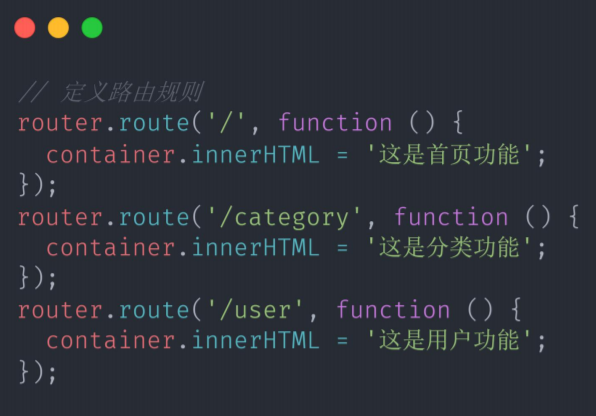History方式采用HTML5提供的新功能实现前端路由。

·在操作时需要通过** history.pushState()**变更URL并执行对应操作。



<!DOCTYPE html>
<html lang=“en”>
<head>
<meta charset=“UTF-8”>
<meta name=“viewport” content=“width=device-width, initial-scale=1.0”>
<title>Document</title>
</head>
<body>
<div>
<a href=“/“>首页</a>
<a href=“/category”>分类</a>
<a href=“/user”>用户</a>
</div>
<div id=“container”>
这是首页功能
</div>
<script>
var router = {
// 存储路由的对象
routes: {},
// 定义路由的方法
route (path, callback) {
this.routes[path] = callback;
},
// 用于触发指定的路由操作
go (path) {
// 更改 url
history.pushState(null, null, path);
// 触发路由对应的回调函数
this.routes[path] && this.routespath;
}
};
// 设置 a 标签的功能
var links = document.querySelectorAll(‘a’);
var container = document.querySelector(‘#container’);
links.forEach(function (ele) {
ele.addEventListener(‘click’, function (event) {
router.go(this.getAttribute(‘href’));
event.preventDefault();
});
});
// 路由规则
router.route(‘/‘, function () {
container.innerHTML = ‘首页功能’;
});
router.route(‘/category’, function () {
container.innerHTML = ‘分类功能’;
});
router.route(‘/user’, function () {
container.innerHTML = ‘用户功能’;
});
</script>
</body>
</html>








